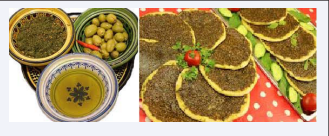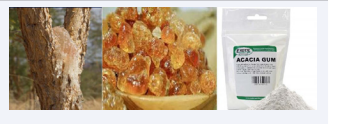Intestinal (Dietary) Dialysis: A Practical Nutritional Guide
- 1. Advisor doctor, Children Teaching Hospital of Baghdad Medical City, Iraq Head, Iraq Headquarter of Copernicus Scientists, International Panel Baghdad, Iraq
Abstract
There has been accumulating evidence confirming that intestinal (dietary) dialysis can be useful option for many patients with chronic renal failure during the course of their illness. The aim of this paper is to provide a comprehensive nutritional guide for treating patients with intestinal dialysis.
Keywords
Chronic renal failure, Dietary therapy, Intestinal dialysis, A practical guide
CITATION
Al- Mosawi AJ (2020) Intestinal (Dietary) Dialysis: A Practical Nutritional Guide. J Urol Res 7(1): 1118.
INTRODUCTION
There has been accumulating evidence confirming that intestinal (dietary) dialysis can be useful option for many patients with chronic renal failure during the course of their illness [1-6]. The aim of this paper is to provide a concise practical nutritional guide for treating patients with intestinal dialysis.
In healthy individuals ingested proteins are degraded into amino acids and their metabolism by the liver yield nitrogen, mainly in the form of urea which is mostly excreted by the kidneys, with 25-40% recycled through the gastrointestinal tract and excreted fecally. The extra-renal excretion of urea dose not exceeds three grams daily even in uremia despite the marked increases in blood urea. Failure of the kidney to excrete urea lead to elevation of its level in blood is with development of the uremic syndrome which is the main clinical manifestations of chronic renal failure resulting from elevated levels of urea, abnormalities in the body content and distribution of water and electrolytes, and abnormal production of renal hormones including erythropoietin, 1-25 dihydroxyvitamin D and growth hormone. In fact, few other products of protein metabolism have been identified, but urea is quantitively the most important representing 80% or more of the total nitrogen excreted into the urine in patients with chronic renal failure maintained on diets containing 40g or more of protein. Symptomatic uremia is associated with nausea, anorexia, vomiting and fatigue [1-6].
The conservative treatment of non-terminal chronic renal failure before the need for dialysis generally aims at lowering accumulation of urea and other products of nitrogen metabolism to prevent the development of the uremic symptomatology and complications. It consists of dietary and pharmacologic measures which include protein and phosphorus restriction, calorie and water soluble vitamins supplementation, phosphate binders, and correction of other abnormalities such as fluid and salt retention, hypocalcaemia, hyperkalemia, and hypertension [1, 2, 5].
Peritoneal dialysis, one of the methods used to lower urea levels in chronic renal failure acts by shifting the urinary excretion of urea to the peritoneal excretion with use of intraperitoneal dialysis fluids. The combined use of conservative interventions of chronic renal failure and a dietary material (Acacia gum) to increase this extra renal excretion and shift the urinary excretion of urea to the intestinal excretion has been increasingly called intestinal dialysis technology [3,4,7-9].
What makes intestinal (dietary) dialysis possible is the fact that with appropriate dietary and pharmacologic interventions, patients with non-terminal chronic renal failure can be maintained well and the transition from non-terminal chronic renal failure to end-stage chronic renal failure represents a small decrement of renal function resulting in a large physiologic deterioration for the patient. Conservative (Dietary and pharmacologic) interventions can only successful in non-terminal chronic renal failure patients. The additional use of a dietary supplement that enhance extra-renal fecal nitrogen excretion can possibly bridge this gap resulting from this small decrement of renal function and possibly obviating the need dialysis for some period of time [1- 11].
The main components of intestinal dialysis include the conservative (dietary and pharmacologic) interventions of chronic renal failure plus the supplementation of a relatively large amount of soluble fiber “acacia gum” which is digested by colonic flora, and cause a shift of urinary excretion to intestinal excretion by modifying the enterhepatic urea cycle and increasing the amount of nitrogen eliminated as fecal waste.
During intestinal dialysis, judicious protein restriction lowers endogenous protein catabolism and the accumulation of urea and other nitrogenous waste products. Protein restriction also reduces the phosphorus intake and help in preventing secondary hyperparathyroidism and renal osteodystraphy associated with chronic renal failure. Protein restriction also lowers the intake of potential hydrogen ion, because every 10 grams of protein provides 7 meq of hydrogen ion in the form of sulfated aminoacids. Thus, protein restriction helps also to ameliorate the acidosis in chronic renal failure [1,2,5,8,10].
Protein and phosphorus restriction can be achieved by totally restricting high protein foods meat, poultry, fish, milk, cheese, yogurt, and legumes. High protein fruits and nuts including banana, peanut, pistachio, almond, and walnut need also to be avoided.
High biologic value protein helps in reducing the accumulation of urea and other nitrogenous waste products and acid load for renal excretion and also helps in maintaining a positive nitrogen balance. Egg protein has the highest biologic value (1 large egg contains 6g protein).
During chronic intestinal dialysis, it is not convenient nor really practical to limit the intake of proteins to the high biologic value egg protein, therefore 50% of the protein intake should be provided as egg, and the other 50% provided with the intake of vegetables, rice, and bread. Thus, avoiding restriction of caloric intake which may lead to negative nitrogen balance, muscle wasting and growth failure in case of children Egg is the most important source of protein during intestinal dialysis and is generally taken during breakfast with restricting the high protein and phosphate diary products (Milk, cheese, and yogurt) [1,2,5,6].
Provision of adequate calories is useful for minimizing protein breakdown and help in lowering level urea of urea and other nitrogenous waste products. Adequate intake of carbohydrate and fats is also useful in compensating for protein restriction. Glucose and other carbohydrates are protein sparing and decrease endogenous protein catabolism and the production of urea and other nitrogenous waste products. Although, fats are less effective than carbohydrates in minimizing protein catabolism, they are given to provide essential fatty acids and to enhance the palatability of the diet. In the absence of diabetes, there is no limit to the amount of carbohydrates and fats that can be taken. Carbohydrates can be taken as sugar, jams, and honey. The major sources of fats are oils, butter, and fresh cream [1,2,5,8,10]. With egg, butter or cream (fats), honey or jam (carbohydrate), bread, and tea or coffee without dairy milk can constitute a balanced healthy palatable breakfast that help in lowering urea level and at the same the preventing the development of protein deficiency.
Figure-1a shows
Figure 1a: A low protein palatable breakfast for non-diabetic patients may include eggs (fried, boiled or half boiled), cream or butter, honey or jam, bread, dairy free tea or coffee, and vegetable or fruit juice.
a low protein palatable breakfast for nondiabetic patients. It may include eggs (fried, boiled or half boiled), cream or butter, honey or jam, bread, dairy free tea or coffee, and vegetable or fruit juice. For diabetic patients who need to avoid cream, butter, honey and jam, alternative low protein-low sugar options for breakfast include a Middle Eastern dish of thyme, olive oil, olive, and thyme pastry (Figure 1b).
Figure 1b: Alternative low protein-low sugar options for breakfast include a Middle Eastern dish of thyme, olive oil, olive, and thyme pastry.
While High protein vegetables and legumes such beans, peas, chickpeas lentil should be totally restricted, many of the low protein vegetables such eggplant ,zucchini, squash, and cabbage are useful in making broths and stews that with rice or bread can help in making low protein palatable lunch and dinner. Examples of low protein meal that can be taken at lunch and dinner include zucchini or eggplant broths with rice and fried eggplant with or without other fried vegetable like tomato, onion, and bell pepper (Figure 2).
Figure 2: Examples of low protein meal that can be taken at lunch and dinner include zucchini or eggplant broths with rice and fried eggplant with or without other fried vegetable like tomato, onion, and bell pepper.
Low protein vegetables such as tomato, bell peppers, cucumbers, onions, olive, lettuce, celery, leek , basil and carrots are useful in making salads which supplement breakfast, lunch, and dinner and contributing to making theses meals more healthy and minimizing the intake of protein.
Low protein fruits such as grapes, water melon, melon apples, pears, pineapple, apricots, peaches, nectarine, damson, plums, pomegranates, figs, cherries, and strawberry can be used as snacks or to supplement the three daily meals and also help in minimizing protein intake.
Low protein nuts especially chestnut and coconut can also be used as snacks or to supplement the three daily meals and also help in minimizing protein intake [1,2].
Dietary restrictions of sodium and potassium depend on the presence of oliguria, edema, hypertension, and hyperkalemia. Practically, patients with chronic renal failure who have no problem with hypertension or edema can take up to 2g (80meq) of sodium daily by totally restricting salty foods and add no salts at the table. If hypertension or edema develops, sodium intake is restricted to 1meq/kg and occasionally to 0.2meq/kg/day. When such diet is unsuccessful or too unpalatable, oral frusemide is added to the regimen (1-2mg/kg/day) [1,2,5,10].
Various pharmacologic measures are also used in the treatment of chronic renal failure that are aiming at preventing or correcting abnormalities which are expected to appear during the course of chronic renal failure including iron ,vitamins deficiencies, hypocalcaemia, hyperphosphatemia, hypertension, acidosis, growth retardation, renal oseodysrtophy [1,2,5,10-16].
Acacia gum is the active component of intestinal dialysis that lower urea level by increasing fecal excretion is a complex polysaccharide obtained mostly from the dried gummy material of the stem and branches of acacia trees (Senegal family leguminosae). It is recognized as safe by the FDA. It’s widely used in the production of foods such as puddings, frostings, candy, beverages, and chewing gum. It has demulcent properties and therefore, it is often added to medicines. Acacia gum is a water soluble fermentable polysaccharide resistant to gut enzymes, and thus can be described as dietary fiber. Figure-3 shows acacia gum tree, raw acacia gum, and powder acacia gum.
Figure 3: Acacia gum tree, raw acacia gum, and powder acacia gum.
The principle fermenter bacteria able to use acacia as the only carbohydrate source are bacteriods and bifidobacterium [1-5].
During intestinal dialysis, patients need to take 75grams of powder acacia gum dissolved in water or diet seven-up in three divided doses before meal. Most patients will need to take oral domperidone 10mg before or with acacia gum to avoid developing excessive gaseous distention of the abdomen which may interfere with compliance.
REFERENCES
2. Al-Mosawi AJ. A new dietary therapy for chronic renal failure. LAP LAMBERT Academic Publishing GmbH& Co. KG, Saarbrücken. 2013.
3. Al-Mosawi AJ. Advances of Peritoneal Dialysis in the Developing World: Combined Intermittent Peritoneal Dialysis and Intestinal Dialysis (Chapter 3). In Marcia Bell Ed. Nova Science Publisher. 2017.
4. Al-Mosawi AJ. Advances in Peritoneal Dialysis (Chapter 2). In Anil K. Agarwal, Loay Salman, ArifAsif Ed. Nova Science Publisher. 2010; 17- 68.
6. Al-Mosawi AJ. Principles: clinical pathophysiology of uremia and relevant urea metabolism Therapy (Clinical practice) 2006; 3: 303- 304.
7. Al-Mosawi AJ. Scientific productivity of Iraqi pediatricians in pediatric nephrology .1st ed., Saarbrücken; LAP Lambert Academic Publishing. 2019.
9. Al-Mosawi AJ. Researchgate activity of elite pediatricians from ten Arab countries: ResearchGate analysis.1st ed., Baghdad; Iraq Headquarter of Copernicus Scientists International Panel Publishing: 2019.
10.Al-Mosawi AJ.The conservative management of non-terminal chronic renal failure (Clinical practice) Therapy (Clinical practice) 2006; 3: 305-306.
11.AJ-Al-Mosawi. Childhood chronic renal failure (CRF): An extraordinary experience. Arch Dis Child. 2008; 93: 384.
14.Al-Mosawi AJ. The use of acacia gum in end stage renal failure. J Trop Pediatr. 2007;53:362-365.










































































































































